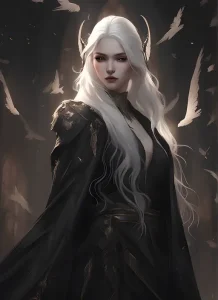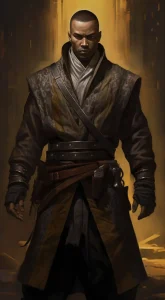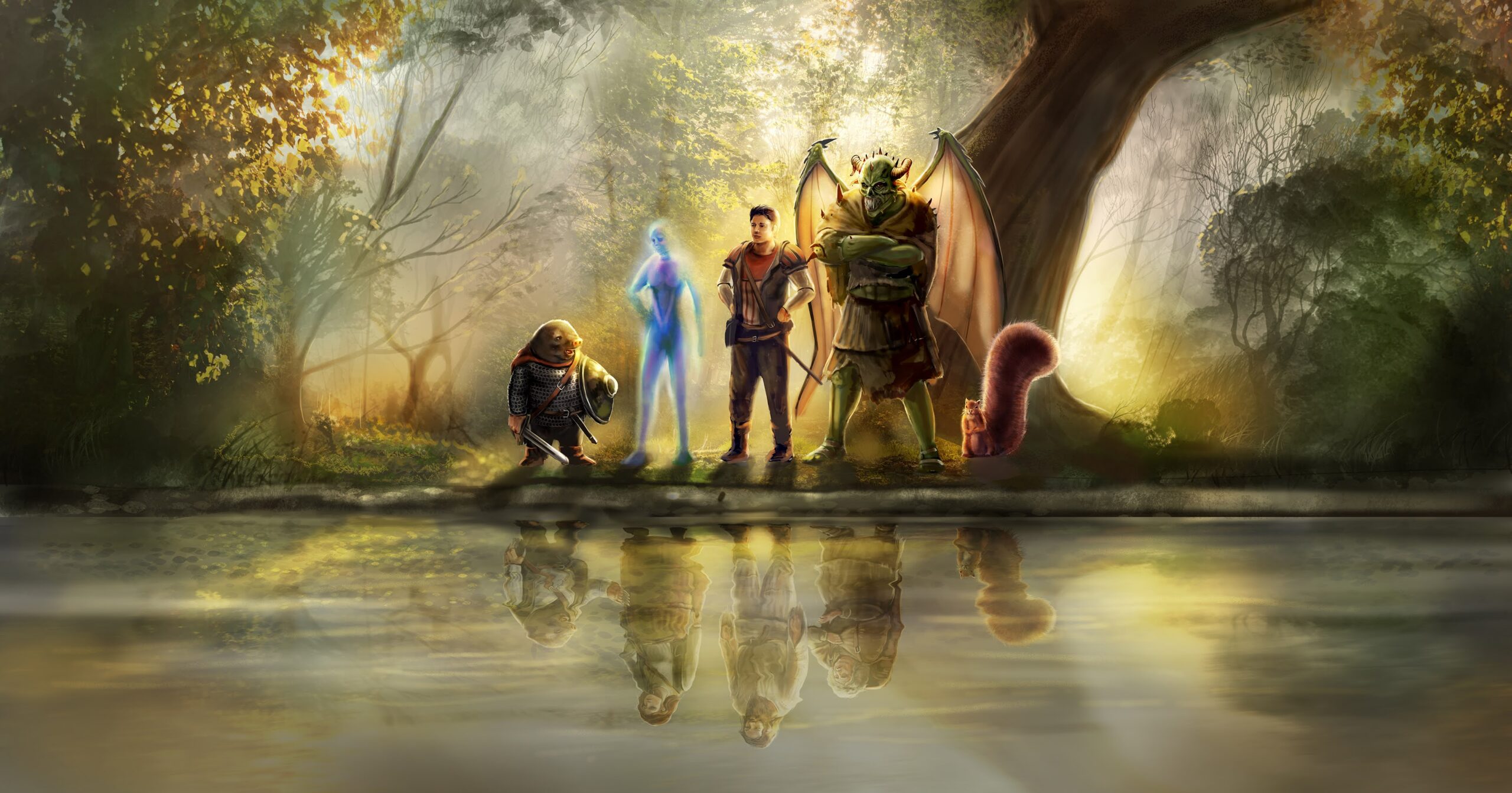The genre of fantasy art offers visitors a glimpse into fantastical worlds full of magic, mystery, and adventure while transcending the bounds of reality. This essay explores the many dimensions of fantasy art, highlighting its rich history, engrossing themes, and timeless appeal—from the peculiar allure of dark fantasy to the legendary characters of Final Fantasy.
Key Takeaways
Various Themes and Styles: From the eerie charm of dark fantasy to the surreal landscapes of Final Fantasy, fantasy art spans a broad spectrum of themes and styles. Artists create immersive worlds that capture and inspire by fusing elements of folklore, mythology, and fantasy.
- Characters and World-Building: These two elements are essential to fantasy art. Every feature, from expansive castles and beautiful landscapes to heroic knights and mysterious creatures, is painstakingly created to immerse viewers in imaginative worlds full of wonder and adventure.
- Evolution of Visual Storytelling: From ancient mythical representations to modern digital art and computer-generated imagery, the development of fantasy art is closely correlated with advances in visual media. Video game, movie, and literary artists are still pushing the envelope, developing immersive works that reimagine narrative in the digital age.
- Fantasy art has had a significant influence on popular culture, affecting everything from fashion and design to literature and film. Famous series like “Final Fantasy” and “The Lord of the Rings” have influenced contemporary fantasy interpretations and fostered a global fan base and creative community.
- Creative Expression and Innovation: To push the bounds of what is feasible, artists in the genre are always innovating by experimenting with new methods and tools. With the use of digital art, virtual reality, and augmented reality, viewers may interact with fantasy worlds in ways never seen before, opening up new possibilities for immersive storytelling.
- Inspiration & Imagination: Fantasy art is fundamentally a celebration of the creative potential of the human intellect and the strength of imagination. It creates an inspiring and wonder-filled atmosphere that cuts over cultural and generational divides by allowing viewers to venture into worlds where magic is real, heroes emerge, and grand quests take place.
- Legacy and Future: Fantasy art’s capacity to inspire creativity and narrative is still powerful, even as it changes. Fantasy art will enthrall and inspire for years to come as long as creators and viewers alike continue to value the genre’s capacity to spark the imagination, arouse strong feelings, and provoke thought.
Themes of escape, bravery, magic, and the paranormal can all be explored in fantasy art, giving both artists and viewers a chance to enter realms where the mind is unrestricted. It is still a thriving and significant genre in the visual arts, evolving with technological breakthroughs and changes in societal preferences.
Dark Fantasy Art: Penetrating the Shadows

Dark fantasy art transports spectators to spooky, evocative worlds where mystery and darkness rule supreme. Horror and fantasy themes are expertly combined by artists in this genre to create eerie, wonder-filled landscapes and moody, brooding atmospheres.
The expressive use of light and shadow is a defining characteristic of dark fantasy art. Deep, contrasting tones heighten the uncanny atmosphere and transport viewers to other worlds where twisted trees hide mysterious monsters and ancient castles loom above foggy landscapes. Themes of death, dread, and the unknown are explored in this genre, which questions preconceptions and encourages reflection on the darker sides of human nature.
Fantasy Character Art: Enlivening Legends

Fantasy art revolves around its characters, who might be either heroes or villains or somewhere in between. Fantasy character art honors the variety of legendary characters and mythological creatures, each painstakingly created to capture the spirit of their realms.
Fantasy characters, who range from heroic knights in shining armor to ethereal beings with otherworldly beauty, enthrall audiences with their elaborate designs and gripping stories. Artists use a wide range of sources, including mythology, folklore, and their creative ideas, to create figures that are emotionally and visually compelling.
Every aspect of a character’s look, including clothing, weapons, stance, and facial expressions, is painstakingly created by artists. Fantasy character art demonstrates the range of human inventiveness and imagination, whether it is influenced by mythological animals, medieval mythology, or unique ideas. These figures become symbols of the fantasy genre, personifying virtue, vice, and all shades in between.
Final Fantasy Art: An Immense History of Visual Majesty
At the height of fantasy art, the “Final Fantasy” series is known for its breathtaking graphics and inventive narrative. Final Fantasy has advanced from pixelated sprites to cinematic masterpieces since its launch in 1987, pushing the limits of narrative richness and visual design.
Themes and styles seen in Final Fantasy art are varied and include everything from futuristic cityscapes to mystical forests full of fantastical creatures. From the first sketches to the fully realized graphics that perfectly capture the spirit of the game’s environment and characters, concept artists are crucial to the overall look and feel of any game.
Through decades of invention, Final Fantasy concept art showcases the progression of characters, landscapes, and narrative themes, providing an intimate look into the creative process behind these renowned games.
Final Fantasy Concept Art: From Dream To Actuality
Every Final Fantasy game starts with concept art, which provides an insight into the thought process that goes into creating the series’ recognizable images. Through sketches and digital graphics, artists experiment with many ideas and visual motifs, honing their notions until they mesh with the main themes and story of the game.
Final Fantasy concept art demonstrates the development of visual storytelling in computer games, from character designs that start as crude sketches to intricate depictions of mythological locales. These preliminary ideas provide valuable insight into the high craftsmanship and creative vision that characterize the series, and they also influence the final designs shown in the games.
Concept art from Final Fantasy frequently includes extensive comments and annotations that shed light on the creative choices that went into every design, from the elaborate machinery of fantasy airships to the elaborate outfits of the key characters.
Fantasy Castle Art: Majestic and Mysterious Fortresses
Castles, which represent themes of power, history, and enchantment, are timeless icons of fantasy worlds. The majesty and mysticism of these architectural wonders are captured in fantasy castle art, which frequently combines historical inspirations with magical features like towering towers, ethereal gardens, and mystical runes.
To create captivating designs that transport viewers to realms where kings rule from towering citadels and wizards perform arcane rituals within winding halls, artists draw inspiration from real-world castles, ancient ruins, and mythological lore. Fantasy castle artwork entices viewers to explore these imposing strongholds, each shrouded in mythology and ready to unlock its mysteries for daring explorers.
Fantasy Landscape Art: Unimaginable Worlds
Viewers are taken to amazing places where magic and fantasy coexist harmoniously with the natural world through the use of fantasy landscape painting. The vast views of undulating hills and serene lakes, to the rough mountains and magical forests, all inspire awe and a sense of adventure.
A variety of techniques are used by artists to create immersive worlds, such as dynamic compositions and vivid color palettes, as well as detailed depictions of mythological creatures and ancient ruins. Viewers are invited to take a visual voyage through realms where mythological monsters roam free, dragons soar overhead, and lost civilizations lay buried beneath the earth through fantasy landscape paintings.
The Development and Impact of Fantastical Art
The origins of fantasy art can be found in ancient mythology and folklore when legends about monsters, gods, and heroic adventures sparked people’s imaginations for ages. Artists have created fantasy worlds that appeal to audiences all across the world by drawing inspiration from historical events, literary works, and cultural customs over time.
Romantic artists such as Gustave Doré and John William Waterhouse illustrated images from mythical worlds and old traditions, delving into topics of fantasy and mythology. The 20th century saw the emergence of fantasy literature by authors like J.R.R. Tolkien and C.S. Lewis, which in turn encouraged fantasy painters to create vivid images of the fully imagined worlds of Middle-earth, Narnia, and beyond.
Within the visual arts, fantasy art has become widely included in movies, TV shows, and video games, impacting both artistic and popular culture. While video games like “The Witcher” and “Elder Scrolls” series have redefined interactive storytelling through immersive worlds and intricate character designs, iconic films like “The Lord of the Rings” trilogy and “Harry Potter” series have brought fantastical landscapes and characters to life on screen.
The Function of Fantasy Art in Modern Society
Fantasy art is still quite popular today in a variety of media and artistic expressions. From epic battles and heroic adventures to introspective travels and magical encounters, artists explore a wide range of themes and approaches. The production and dissemination of fantasy art have been transformed by digital art, which gives creators the freedom to try out novel approaches and connect with people all over the world via social media and online platforms.
In addition, fantasy art is essential to world-building and storytelling in a variety of genres and media. The visual language of fantasy art is used by graphic novels, comic books, and animated programs to convey intricate stories and examine identity, morality, and human condition issues. With the use of virtual reality and augmented reality technologies, viewers can enter imaginary worlds and engage in previously unheard-of interactions with people and settings.
In Conclusion, Embracing Fantasy Art’s Magic
To sum up, fantasy art is a portal to worlds of boundless invention and imagination, not just a genre. Every piece of art, whether it be from Final Fantasy’s visionary worlds or Dark Fantasy’s eerie landscapes, takes spectators on an inspiring and enlightening journey. Fantasy art continues to be a monument to the enduring power of myth, magic, and the human imagination as creators push the limits of visual storytelling.
Fantasy art inspires a sense of adventure and possibilities in all of us, whether we’re facing dragons on far-off shores or searching ancient ruins for hidden treasures. It pushes us to embrace the magical worlds where anything is possible and to look beyond the boundaries of reality. We respect fantasy’s history as a source of inspiration, wonder, and magic for future generations while we celebrate and investigate its artistic merits.

